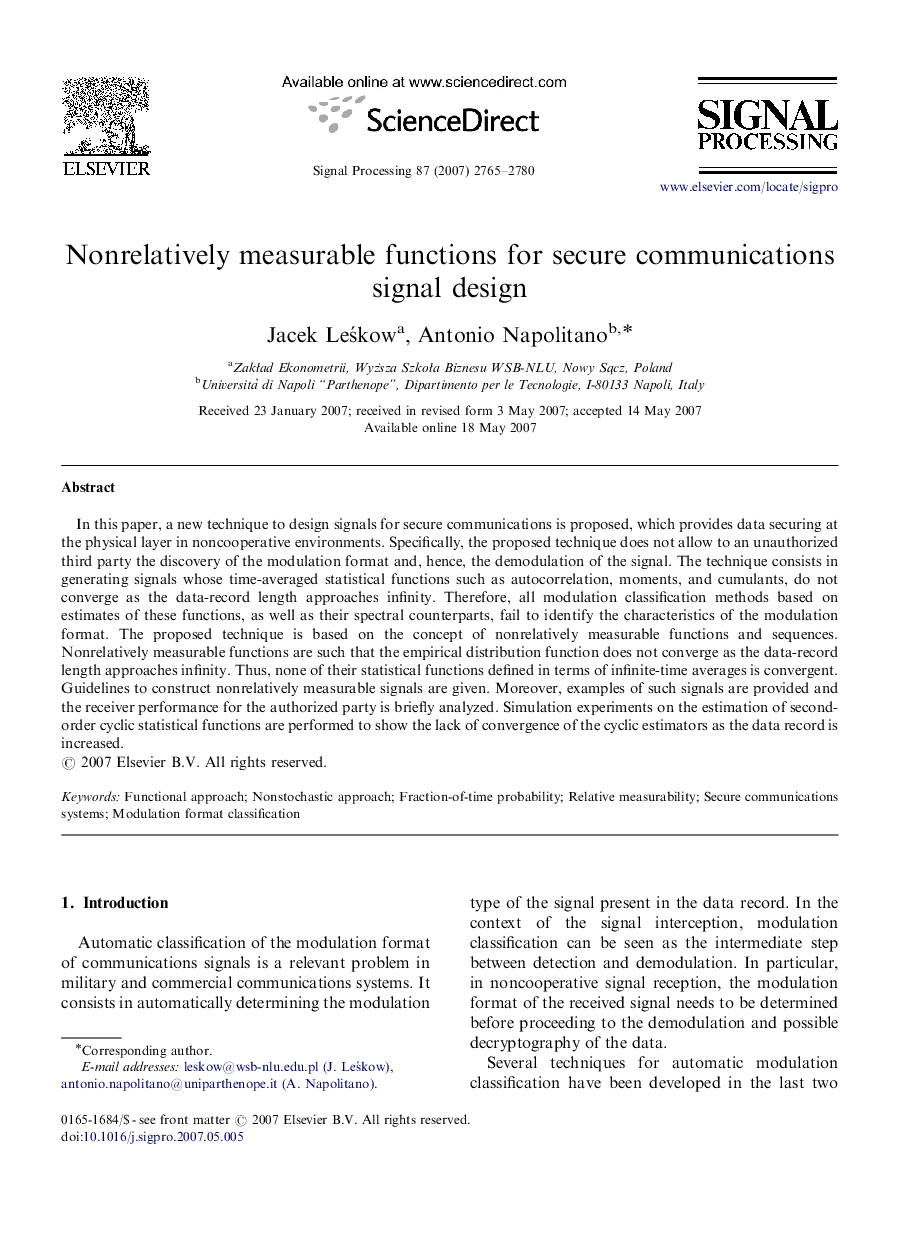| Article ID | Journal | Published Year | Pages | File Type |
|---|---|---|---|---|
| 564825 | Signal Processing | 2007 | 16 Pages |
In this paper, a new technique to design signals for secure communications is proposed, which provides data securing at the physical layer in noncooperative environments. Specifically, the proposed technique does not allow to an unauthorized third party the discovery of the modulation format and, hence, the demodulation of the signal. The technique consists in generating signals whose time-averaged statistical functions such as autocorrelation, moments, and cumulants, do not converge as the data-record length approaches infinity. Therefore, all modulation classification methods based on estimates of these functions, as well as their spectral counterparts, fail to identify the characteristics of the modulation format. The proposed technique is based on the concept of nonrelatively measurable functions and sequences. Nonrelatively measurable functions are such that the empirical distribution function does not converge as the data-record length approaches infinity. Thus, none of their statistical functions defined in terms of infinite-time averages is convergent. Guidelines to construct nonrelatively measurable signals are given. Moreover, examples of such signals are provided and the receiver performance for the authorized party is briefly analyzed. Simulation experiments on the estimation of second-order cyclic statistical functions are performed to show the lack of convergence of the cyclic estimators as the data record is increased.
